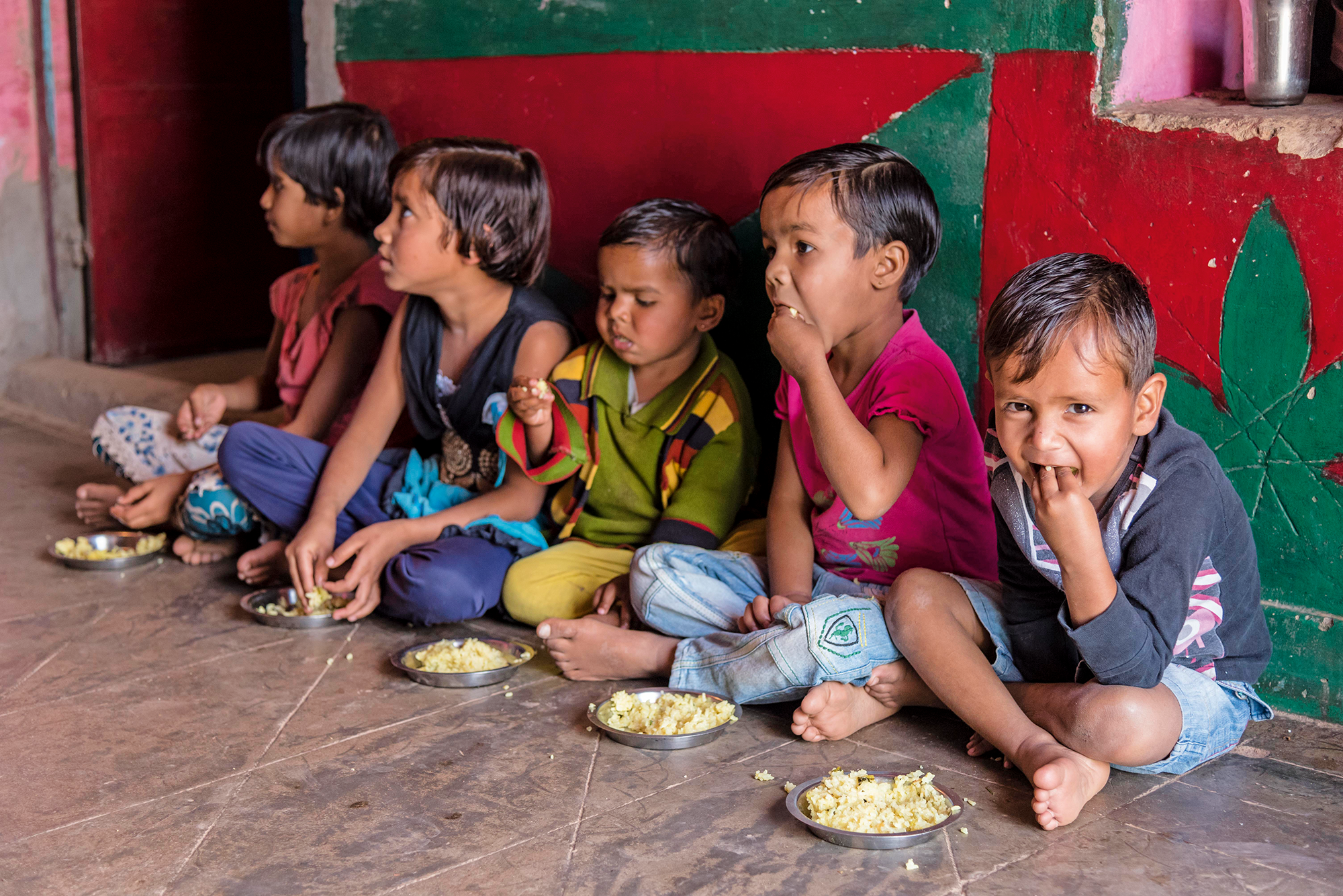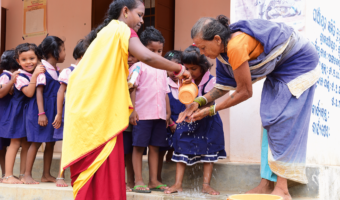Getting nutrition right in the early years can have long-lasting consequences. During their first two years of life, children lay the foundation for their lifelong physical growth and mental development. To help their rapid growth, children need a diet that is rich in nutrients – especially given the small portions they eat. Exclusive breastfeeding is recommended for the first six months, at which point infants are introduced to complementary or ‘solid’ foods, alongside continued breastfeeding. Our first foods shape us. Introducing complementary foods is a crucial stage in a child’s development, and a fun one.
Parents want the best for their children, but they also need options that are easy to find, convenient to prepare, provide good value and that their children will want to eat. Wealthier parents in low- and middle-income countries can often afford more diverse, delicious and nutritious foods, as well as cooking fuel, and typically have more time to invest in cooking – or can afford to pay someone else to cook.
For parents with little income, nutritious foods are often not an option due to their price, availability and the parents’ knowledge. Locally available and inexpensive foods may not offer all the nutrients a child needs. This contributes to significant gaps in the diets of young children (Global Alliance for Improved Nutrition (GAIN) and Unicef, 2019). In low- and middle-income countries, only one in four children aged 6 months to 2 years eats a diet diverse in all the food groups needed to grow and develop (Unicef and GAIN, 2019).
‘Families may also be reluctant to pay for foods that only one family member will eat when financial resources are scarce, so young children end up eating the same food as the rest of the family.’
Manufacturers in the food sector have responded to this need by producing specialised foods for young children, called ‘fortified complementary foods’. These are grain-based porridges that are blended with vitamins and minerals and are designed to fill some specific nutrient gaps in the diet of children aged between 6 and 23 months. These porridges are easy for caregivers to prepare, often just requiring added water, and easy for a young child to eat. However, they are not a medicine, nor a ‘fluoride-in-the-water’-style panacea for childhood malnutrition. They do not fill all nutrient gaps. But they can help decrease micronutrient deficiencies among young children and are an available food option that is appropriate for parents to choose.
Unfortunately, these fortified porridges are often expensive and available only in urban areas. If low-income households use them at all, it is only very occasionally, in finite amounts and sometimes as a remedy when a child is sick. Families may also be reluctant to pay for foods that only one family member will eat when financial resources are scarce, so young children end up eating the same food as the rest of the family.
Scaling-up provision of fortified food by SMEs
Multiple models exist to help those most vulnerable to malnutrition to gain access to fortified porridges. In its work alongside governments and the private sector, the Global Alliance for Improved Nutrition has been an advocate of market-based delivery models and has supported local small and medium-sized enterprises (SMEs) to bring nutritious and safe foods to all children, especially those living in low-income households. This approach tests the feasibility of the private sector to reach low-income groups, whether families will purchase such products and, in this case, whether fortified complementary foods can be sustainable without external funding.
There is appetite among a large number of local SMEs to produce low-cost fortified complementary foods, yet many face challenges reaching scale commercially. Safety is key – especially with foods for young children – so the highest standards of product quality are required, which involves expense. Complementary foods are highly regulated, and compliance with both global and local regulatory requirements can place additional demands on manufacturers. Keeping the retail price low enough for low-income families therefore means low profit – and with slim margins SMEs cannot generate enough capital to grow and invest in promoting their products.
In 2015, GAIN began working with the Federation of Women’s Self-Help Groups in Bihar to set up and operate two production units to manufacture a fortified porridge, ‘Wheatamix’. Bihar is one of the most densely populated Indian states, and also has some of the country’s highest levels of child malnutrition (Government of Bihar, no date).
‘While the positive impacts of this pilot are clear, significant steps need to be taken to move from semi-subsidised models such as Wheatamix, with governments as the main customer, to market-based delivery models with caregivers as the customer.’
This pilot was a semi-subsidised model, with the government of India making regular orders and distributing Wheatamix to children and to pregnant and lactating women as part of its Integrated Child Development Services (ICDS) programme. The start-up capital for the production units was funded by a grant, and the working capital covered by a bank loan and owner contributions. The units started generating profit within a month of receiving orders from the ICDS programme. The project has supplied fortified porridges to 26,000 children and pregnant and lactating women suffering from malnutrition.
While the positive impacts of this pilot are clear, significant steps need to be taken to move from semi-subsidised models such as Wheatamix, with governments as the main customer, to market-based delivery models with caregivers as the customer. Behaviour change interventions promoting the use of fortified porridges such as Wheatamix could improve the distribution and uptake, and technical expertise in branding, packaging and labelling is also needed to make fortified porridges more appealing and user-friendly.
A second challenge is that fortified porridges require a specific blend of vitamins and minerals, or ‘premix’, that is safe and appropriate for children – and procuring high-quality, low-cost premix is a substantial barrier for many SMEs. To address this challenge, GAIN has established a premix facility (Protein Kissée-La, online) that offers SMEs an easier, more cost-effective way to procure high-quality vitamin and mineral premix suitable for young children.
Making fortified porridges more desirable, affordable and available must go hand in hand with strong rules and regulations. Marketing any products to children is very delicate. For that reason, GAIN also works with governments to ensure regulatory environments that are safe for children and also reduce risks and costs for businesses. GAIN supports and participates in multi-stakeholder alliances to translate global evidence into robust regulatory guidelines (GAIN, 2015), and to build trust and transparency in the process through the SUN (Scaling Up Nutrition) Business Network.
Making markets work for low-income families is difficult and takes time. Most fortified porridges are cereal-based and non-perishable, but there are opportunities to innovate further, looking beyond grains to include other locally available foods which infants consume. Providing low-income families with more food options allows parents to give their children the chance to start on the best path in life.
GAIN’s ongoing work on fortified complementary foods around the world will be summarised in a working paper, which will be available on the GAIN website.



